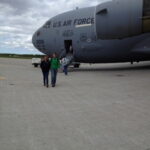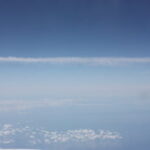Manila’s Ninoy Aquino International Airport (NAIA) currently has four terminals. It is important to confirm the terminal where you will arrive, especially if someone is picking you up at the airport. Take note that the airport vicinity is often such a traffic-congested area that moving from one terminal to another takes a significant amount of time.
General Guide for Travelers
If you are coming from an international flight, you may arrive at any of the first three terminals: NAIA Terminal 1; NAIA Terminal 2, or the Centennial Terminal; or NAIA Terminal 3. If you are going to a local destination outside Manila, you may depart at NAIA Terminal 2; NAIA Terminal 3; or NAIA Terminal 4, or the Domestic Terminal.
Always make sure you have enough money, preferably the exact amount, to pay for the terminal fee for your departing flight. Whether traveling to an international or domestic destination, all Philippine airports require paying this fee in cash before getting through the immigration and security areas. The fee can range anywhere from $6 to $18. You can pay in Philippine peso or U.S. dollar. Foreign currency exchange booths are located around the airport.
NAIA Terminal 1
As of 2012, NAIA Terminal 1 is the Philippines’ main international gateway where foreign carriers land, except for Nippon Air. The country’s flag carrier Philippine Airlines (PAL) and other local carriers also use separate terminals.
As the busiest and oldest operational international terminal in Manila, it accommodates an almost non-stop stream of passengers coming from or going to different airports worldwide.
Most intercontinental flights use this terminal. And so, it is generally expected that both inbound and outbound flights here require passengers to wait in long lines before getting through the X-ray machine inspection areas, check-in counters, and terminal fee and immigration booths.
NAIA Terminal 2 (Centennial Terminal)
NAIA Terminal 2, also known as the Centennial Terminal, is exclusively used by Philippine Airlines for both domestic and international flights. It began operations in 1999, a year after the centennial celebration of the Philippines’ Independence Day.
As a relatively new terminal served by a single airline company, it offers more convenient facilities and overall ambience to passengers. There are more free space and dining and shopping concessionaires around the area. Landscape patios also punctuate the building’s white and silver facade.
The terminal features an arrowhead design with arrow wings designated as North and South. The North Wing handles all international flights, while the South Wing handles all domestic flights. The expansive lobbies and counters located at the ground level host the terminal’s arrival traffic, while the second level services departure traffic.
NAIA Terminal 3
NAIA Terminal 3 is the newest and largest terminal in the NAIA complex to date. It opened in 2008 in response to Manila’s ever-increasing passenger and airline traffic. It is currently used by the domestic and international flights of Cebu Pacific, Airphil Express, and Nippon Air. So far, international flights operating in this terminal are for selected Asian countries only. Plans for future expansion and transferring of intercontinental flights originally from Terminal 1 are already on the works.
The terminal has a two-tiered design with the ground level servicing arrivals and the second level facilitating departures. Compared to the other terminals, it provides a larger number of facilities and commercial establishments for travelers’ use. Concessionaires include a variety of retail shops, food courts, fast-food chains, restaurants, and convenience and specialty stores.
NAIA Terminal 4 (Domestic Terminal)
NAIA Terminal 4, also known as the Domestic Terminal, is the oldest terminal and the original international airport of NAIA that now operates the domestic flights of Zest Air and Southeast Asian Airlines (Seair). Locals often refer to it as the Domestic Airport.
Built in 1948, this one-level building handles a number of flights to different provinces around the Philippines. Some international tourists also use this terminal, especially those seeking more affordable local flights and promotional deals from Zest Air and Seair. These airlines often cater to passengers going to the most famous beach spots and other tourist destinations around the country at relatively cheaper rates compared to Philippine Airlines and Cebu Pacific.




